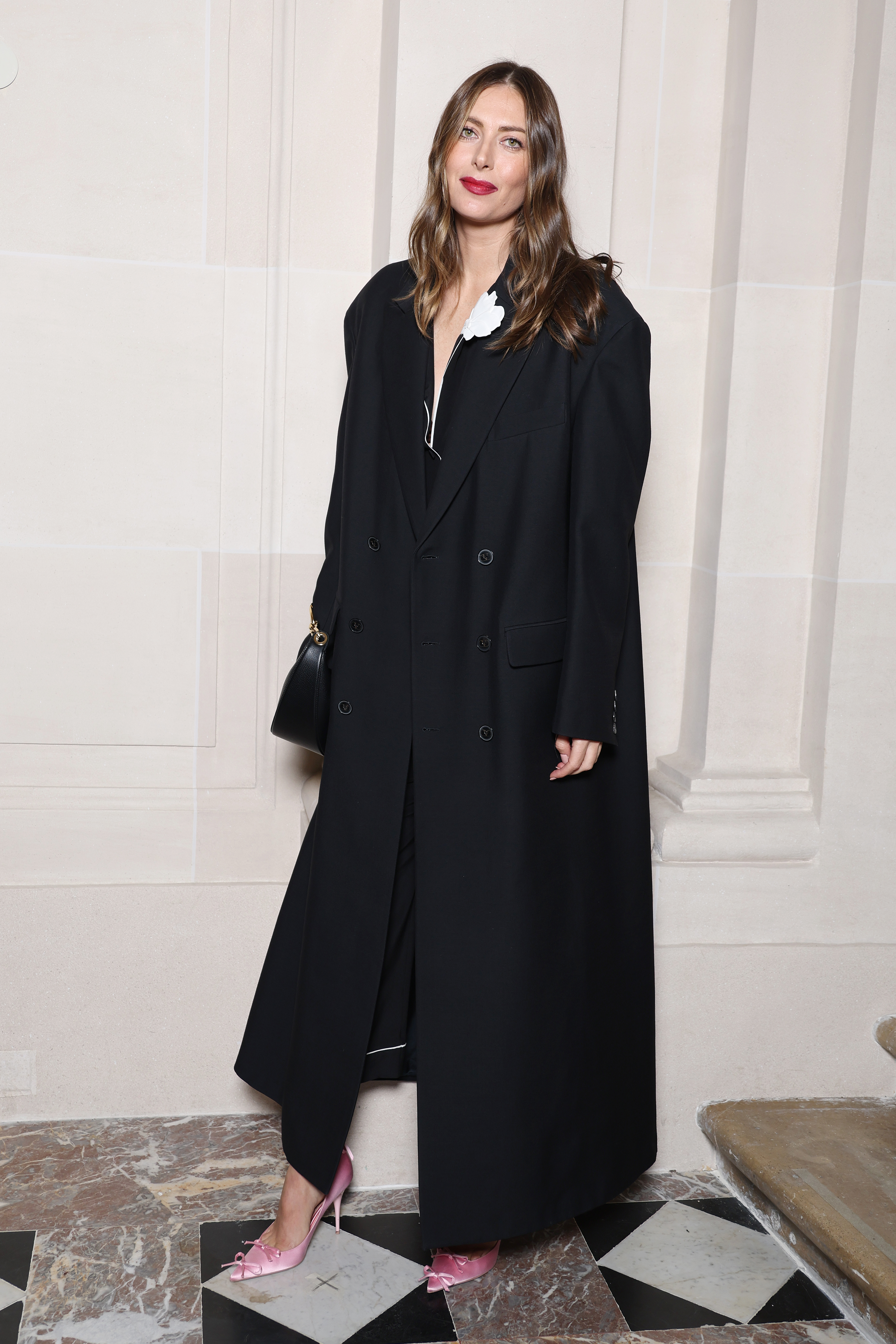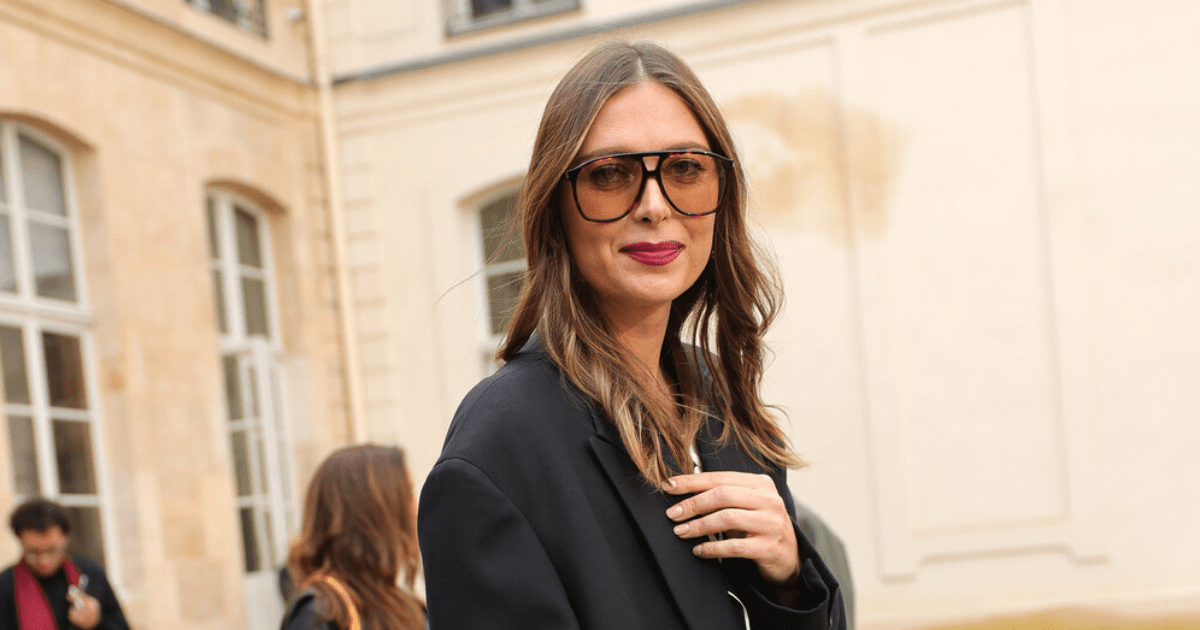Tennis Icon Turned Style Icon
Tennis legend Maria Sharapova wowed fans with her elegant look at Paris Fashion Week, trading in her tennis racket for a stylish all-black outfit at a Valentino event.
From Court to Catwalk
Once known for her talent on the tennis court, Sharapova has now become a mentor for women business owners and a fashion icon, receiving praise for her stunning appearance in the French capital.
Business Success Post-Retirement
Despite retiring at the age of 32 after a 15-month drug ban, Sharapova's business venture Sugarpova has flourished, now valued at an impressive £150 million and generating £16 million in annual revenue.
Golden Girl to Global Business Innovator
The journey from world-renowned tennis star to successful businesswoman has been a lucrative one for Sharapova, solidifying her status as a trailblazer both on and off the court.

Frequently Asked Questions
What kind of support team does a top tennis player need?
Tennis players need a solid support team in order to perform at their best. This team includes a coach who oversees training and technical improvement, as well as a fitness instructor for physical conditioning. A physiotherapist, medical professional, or sports psychologist will also be part of this team to provide mental coaching. A hitting partner, a manager or agent, and sometimes a stringer can also be part of the team, ensuring the player can solely focus on their game.
How important is mental and psychological training in tennis?
Tennis players must be mentally and psychologically fit. The player must be able to control stress, maintain concentration, and manage the emotional highs, and lows, of competition. Common techniques include visualization, goal setting, and mental rehearsals. Working with a sports psychologist can help players build resilience, develop coping strategies for pressure situations, and elevate their mental game to match their physical prowess on the court.
Can someone play tennis late and become a professional player?
While it is more challenging, it is not impossible for someone to start playing tennis at a later age and still achieve professional status. Success depends on an individual’s athletic abilities, work ethic, commitment, and accessing quality coaching and competitive opportunities. Late starters will need to engage in highly focused and intensive training, and the path may be more arduous, but with talent and perseverance, reaching a professional level is within the realm of possibility.
What is the daily schedule of a professional tennis player?
The daily training regime of a top-level tennis player is both rigorous, and meticulously organized. It is often a long day on the courts, focusing on tactics, drills, and match-play situations. In addition, players participate in fitness sessions designed to increase strength, agility and endurance. This is complemented by recovery activities such as stretching or massage. The importance of proper nutrition and psychological coaching is also a key component to ensuring that athletes are able to maintain their peak performance, both mentally and physically.
What is the best type of fitness for tennis players to do?
Tennis is an intense sport that demands a combination aerobic endurance, anaerobic strength and power, as well as speed. Tennis players are often required to do cardiovascular exercises in order to improve their endurance. They also need to perform plyometrics, explosive exercises, and weight training exercises in order to gain strength. The core stability exercises and balance drills are important for developing the muscular endurance, coordination, and strength necessary to handle the physical demands in tennis.
Statistics
- Persistent mental training and sports psychology can help reduce performance anxiety by up to 60%, according to sports psychologists working with elite athletes.
- Nutritionists report that a tennis player’s diet should consist of about 55-60% carbohydrates, 15-20% protein, and 20-25% fats during intense training periods.
- Statistical trends indicate that top tennis players usually have at least 5 people in their support team, including coaches, fitness trainers, and physiotherapists.
- Strength and conditioning coaches emphasize core strength, noting that an increase in core stability can improve shot accuracy by up to 43%.
- Engaging in structured video analysis sessions has been shown to improve a player’s tactical decision-making by approximately 35%.
External Links
atptour.com
tenniscompanion.org
itftennis.com
usta.com
myprocoach.net
How To
How to Optimize Your Tennis Training Schedule
The best way to optimize your tennis schedule is by balancing on-court play, fitness training with match play and relaxation. Begin by allocating time to develop technical skills (groundstrokes, serves and volleys) and tactical awareness through situational drills. In order to achieve a solid fitness foundation, you should include weekly sessions of speed, endurance, strength, and flexibility training. Play at least one match per week to allow you to test your skills in an intense competitive environment. Rest days should be introduced to allow for recovery after particularly intense training sessions or match play. A regular review of your training plan is necessary to keep up with the latest developments.
Did you miss our previous article…
https://www.sportingexcitement.com/tennis/katie-boulter-shouts-out-boyfriend-alex-de-minaur-in-victory-speech/

